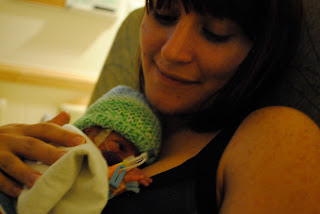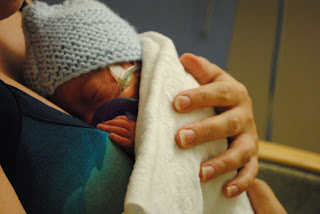There was a stretch of childhood years in which every Sunday morning my sisters and I would pile into our family’s green mini-van and make the half hour journey into town to St. Mary’s Ukrainian Catholic Church. It was time for catechism. We weren't terribly religious, but this had less to do with religion and more to do with tradition.
We would assemble in our church's basement which, after decades and decades of pirogi making, had absorbed the smell of butter and onions into its walls, its woodwork, its essence.
But the familiarity of that smell was welcoming. You knew exactly where you were in space and time, grounded in the presence of an aroma layered on by the past. Our past. My sisters and I knew that our great-grandfather had carved the beautiful picture frame hanging by the stairs leading up to the vestibule. The frame was adorned with an intricate pattern of leaves and vines; we could see our roots in this church.
The woman that taught our catechism class was the same woman that taught my mother and all of her brothers and sisters’ catechism classes. She was the female figure of the male dominated church, and the remnants of the motherland's language still clung to her words. Catechism would always begin with prayer - Our Father. Hail Mary. I've heard stories from my aunts and uncles that back in her heyday she had a little heavier approach to the teachings of the church. By the time our generation sat before her, she had softened - a little.
We spent a lot of time coloring, making chocolates, crafting, learning words in Ukrainian and above all else: singing. Oh! And a very important thing to remember if you ever find yourself in a Uke catechism class: If at any time the priest comes to visit, you stand up and say “Slava Isusu Christu.” To which he will respond “Slava Na Viki.” I could never remember what it meant in English, but I did always remember to perform the ritual.
Rituals are a cornerstone of the Uke church. I think that over half of my time spent in church was as part of a procession. And a large portion of catechism was dedicated to rehearsal. It is no secret that the Catholic mass is half devotion, half aerobics. There are certain times to sit, stand, kneel, walk, sit again. So how do you train a group of kids to know when to do what?
With this:
A clicker.
A device that makes a metallic click when pressed, a sound that carried much meaning within those sacred walls. This clicker was the same one she used when teaching previous generations, when our mothers and fathers were in our place in the processional line, with arms folded neatly over their chests, walking down the aisle one by one towards the altar, listening for the click to let them know when it was time to sit. Her training worked too well. You could see everyone fighting their muscle memory to not react to the sound.
One of my favorite processions was dedicated to St. Nicholas. The Holy Name Society had already been hard at work decorating the church for Christmas. The children would wait downstairs until everyone was seated, then click walk down the aisle to take our place in the front row and click sit down. We would participate in Mass, which was more Ukrainian than English on a holy day like this.
We waited patiently click
stood click
left our pew click
arranged ourselves click
and sang
Ой хто хто Миколая любить
The song is the reason why I loved this particular day. It is a song for children. It was the same song our parents sang many years ago, but now it was ours. Our little group that sat in the belly of the church, soaking up the smell, making paper beads out of old church bulletins, and practicing the Ukrainian words until they felt right. And now there we were, in front of the congregation, listening for clicks and watching everyone's face light up as we began to sing.
When you grow up, you don’t sing this song anymore; you listen to the children sing. There is a loophole though- for the past month or so, way before Ryan deemed it an appropriate time to begin singing Christmas carols (good thing he doesn't speak Ukrainian), I have been singing this song to the boys every night before bed. As soon as they learn it, though, I won’t sing it anymore. It can be their song, in their great-great-grandfather’s language, to pass down to their own children someday.














